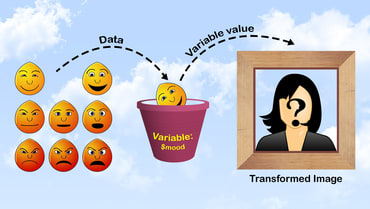As a developer, you hope and anticipate that your website or mobile application will be accessed by different users on various devices. To improve the user-experience, irrespective of the viewing device, you need to make sure that each image adapts to different graphic layouts, device resolutions and other viewing requirements. For example, for an eCommerce site, one image will be displayed on different pages — home page, product page, shopping cart and more — and will be viewed on a desktop, cellphone or a tablet. This means that you need to create numerous versions of every image and for a website with hundreds of images, manual transformation is not scalable.

How you present the content of your website can be just as important as the content itself. The images you display need to conform to the graphic design of your site, and every image needs to fit within a predefined size. Although that may be simple enough to achieve when you are dealing with your own images, the task can be more challenging when displaying images uploaded by your users.

Thrillophilia is India’s largest online tours and activities platform. Through its website and app, the company offers a one-stop solution for travelers looking for tours, activities and things to do. Users can choose from more than 10,000 activities in 200+ cities in India and 15 countries in Asia. Headquartered in Bangalore, India, the company was founded in 2011 and employs more than 50 people.

Websites of all kinds enhance user experience with images. In fact, images appear on almost every Web page. Some of the images are uploaded by users, some are proprietary, and some come from 3rd parties. Regardless of origin, many of these images include text elements, and sometimes you need to be aware of or handle that text.

We all know that images attract interest and increase engagement, but with the huge overload of images out there, we sometimes need to get creative to stand out in the crowd. Your users who upload photos to your site or app may also be looking for those same creative opportunities. A quick look at the most popular social media apps and their continually increasing toolbox of special photo effects shows the increasing trend in popularity and demand for these fun ways of expressing one’s identity.

No programmer could imagine a world without variables. Neither can Cloudinary. That’s why Cloudinary now offers image transformations that support user-defined variables.
Using Cloudinary, you can already deliver transformed images with a variety of transformations, including resizing, cropping, rotating, a huge toolbox of special effects and filters, text and image overlays, and more, all of which you can deliver responsively, on-the-fly, and optimized for quick delivery via CDN.

Controlling who can access your images and videos, and when, can be an important concern for your business and security workflow. You may have resources that you only want some of your users or employees to access, or you may need to make sure that your original resources are secure, and only transformed (edited) versions of your resources are delivered, e.g., with a watermark or logo displayed.

Most developers are familiar with ImageMagick, a very capable open source software suite that they can use to manage and transform images.
The functionality of ImageMagick is typically utilized from the command-line, but wrappers have been written for a wide selection of programming languages, making ImageMagick a very popular choice among developers.

With the decreasing price-performance ratio of computing, research efforts in face detection and face recognition algorithms are rapidly expanding and new techniques for both of these are achieving greater accuracy and reduced processing time.

The night was moist. Angular2 had just been released and developers all over the world were asking for an integrated image management solution.
Cloudinary heeded the call and is proud to present the new Angular2 SDK, providing directives for displaying and transforming images and video with an API.
